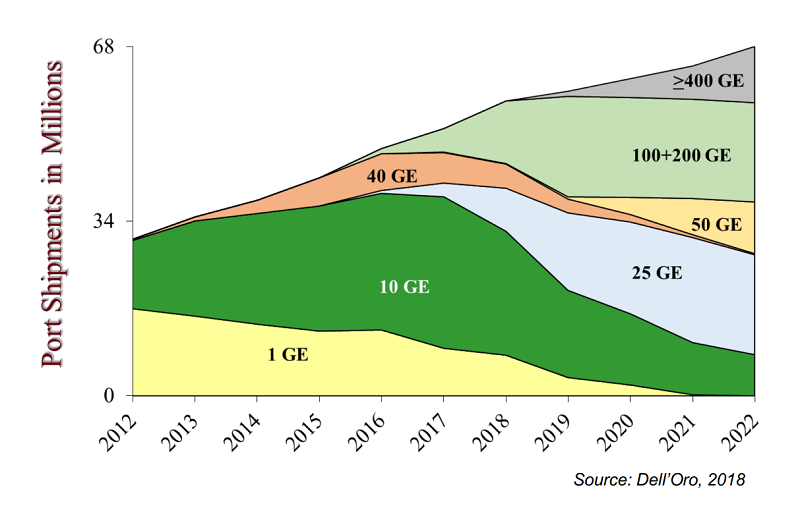Telecom/Datacom
Market Overview
Global optical communications networks are changing dramatically. High-speed radio access and cloud services are driving massive bandwidth demand increase from different types of users. Virtualization is changing the network, with application servers and many of the network functions themselves hosted in large data centers. Hyper-scale data center operators and service providers are installing 100Gbps connections across their networks, deploying 25G to servers, 400G connections between data centers and looking forward to terabit connections in the forthcoming days. These developments are pushing the industry to deliver lower costs and greater bandwidths.

The optical module and components industry have responded to these demands with 100G solutions that already cost less per gigabit than equivalent 10G & 40G solutions, and new developments to further drive down cost and increase bandwidths. The keys to these 100G developments have been low-power and cost-effective 25G components, and smart assembly of optical modules either by using standard subassemblies with automated test, or by the use of silicon photonics or similar technologies.
The QSFP28 modules for 100G Ethernet and SFP28 modules for 25G Ethernet are now the dominant form factors. Especially for SFP28, its bandwidth and data rates are well fit into 5G NR applications and its related market will grow faster. CFP, CFP2 and CFP4 remain important for some applications but have been eclipsed by QSFP28. The first 200G modules for data center and enterprise applications are using QSFP modules - either QSFP56 or QSFP-DD. The big question is what is the right module for 400G? The first CFP8 modules are already available. QSFP-DD is backward compatible with QSFP, and OSFP may deliver better performance, especially as networks move to 800G interfaces.
Coherent technology developed for 100G long-haul networks is now enabling 200G, 400G and 600G connections in metro networks and between data centers. Data center interconnect (DCI) and metro networks are also growing rapidly, with many systems vendors offering solutions in the all-important 80-500 km reach. New digital signal processor (DSP) ASICs and CFP2-ACO modules are giving equipment manufacturers many options with support for multiple modulation schemes including coherent DP-QPSK, 16QAM and 64QAM. For long-haul and metro applications, many equipment manufacturers are currently using in-house designs. That may change with the latest DSP and module developments.
Lightron marketing strategy is to carve out its incumbent customer base in an initial effort to extend up to 100Gbps. 50Gbps PAM4 with dual small form faction (DSFP) and 100Gbps with QSFP28 form factor are to be frontline models we plan to market for wireless customer as well as wireline customers.